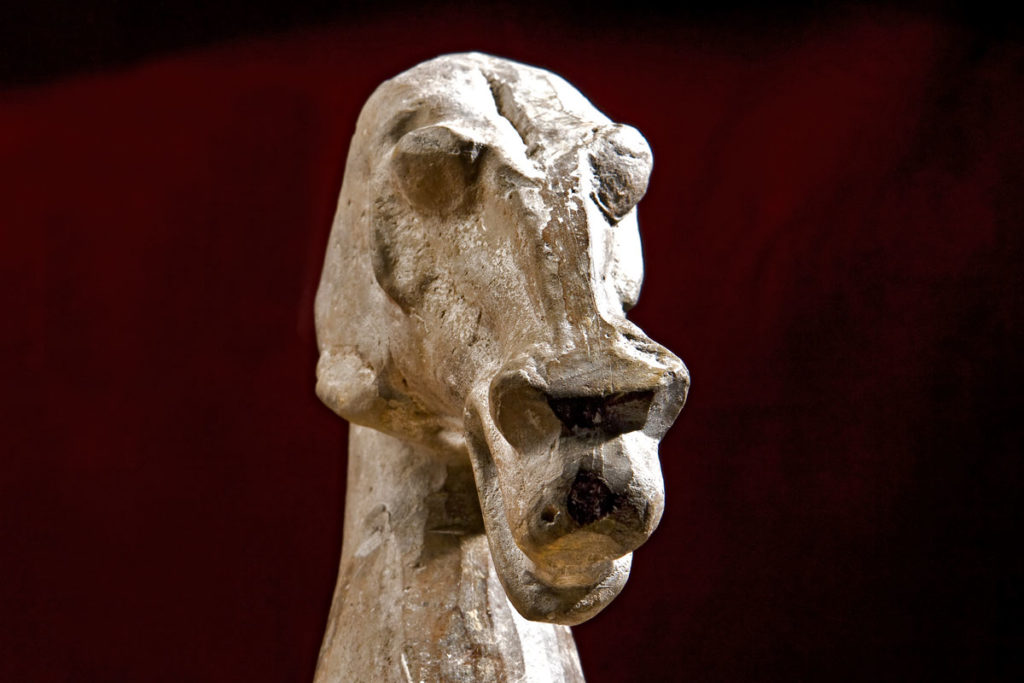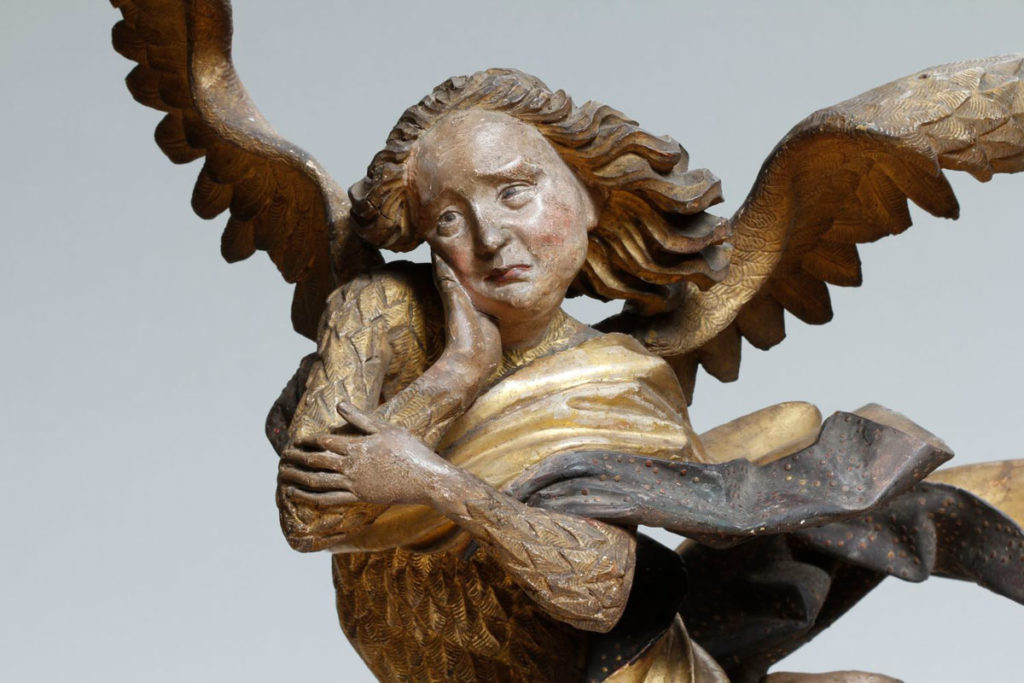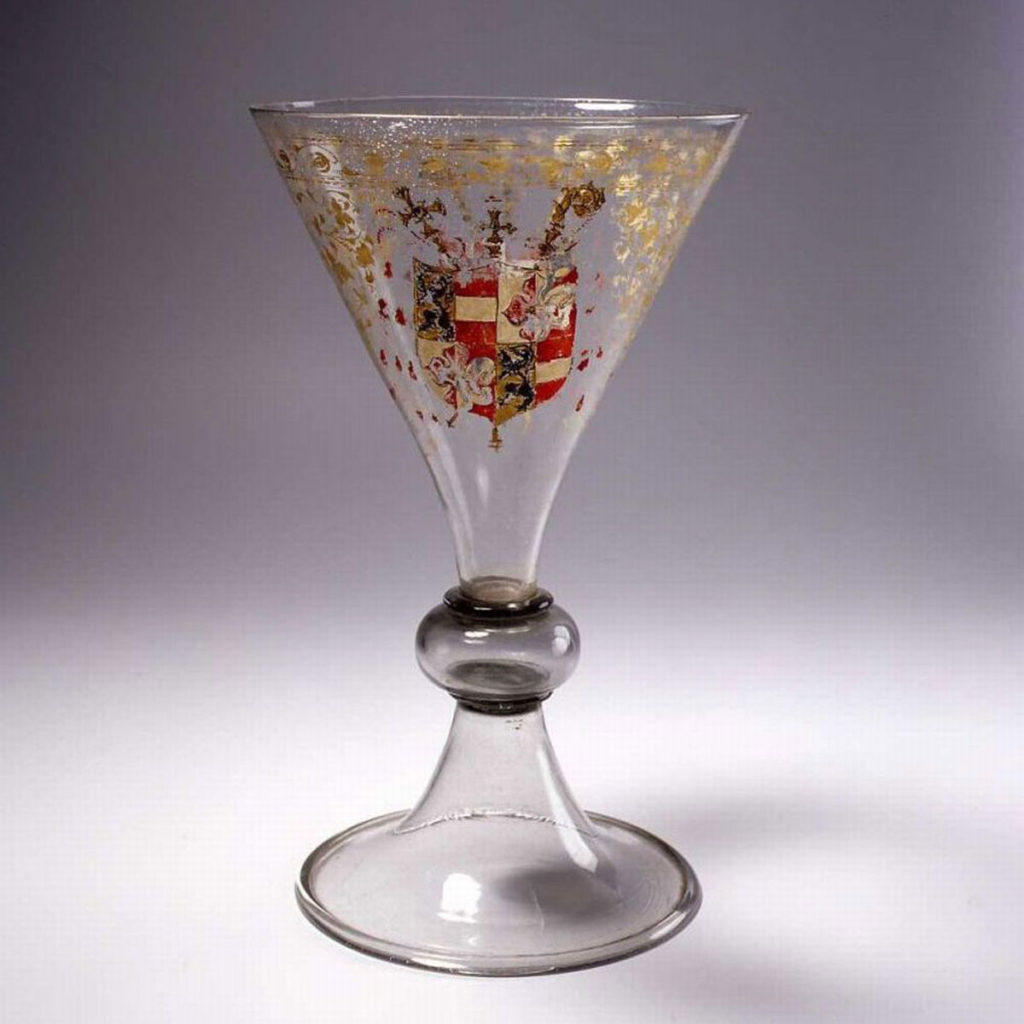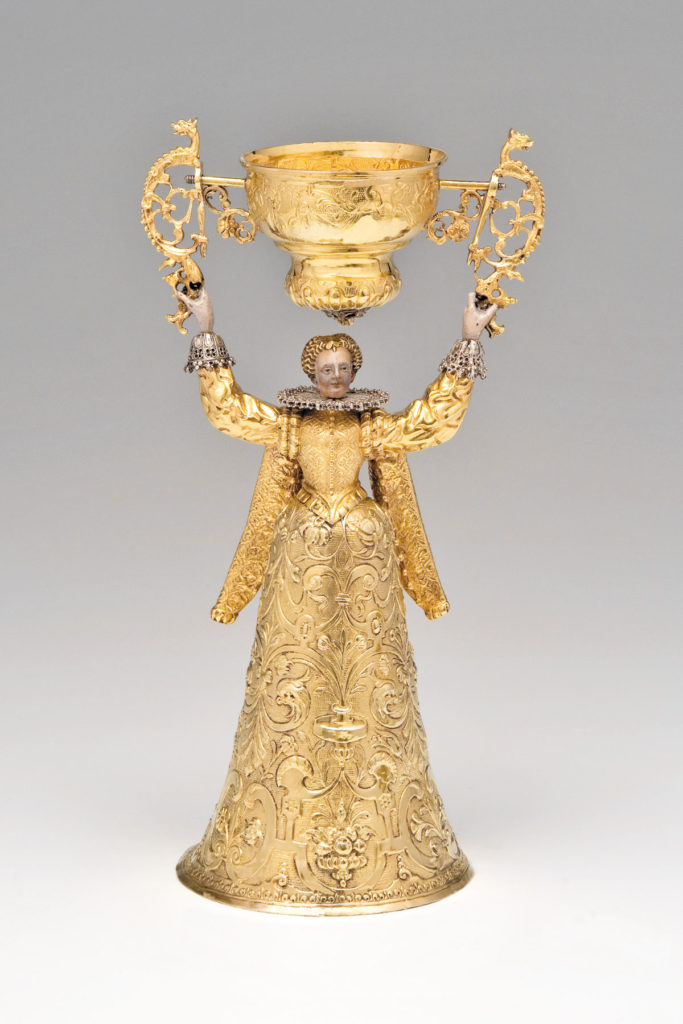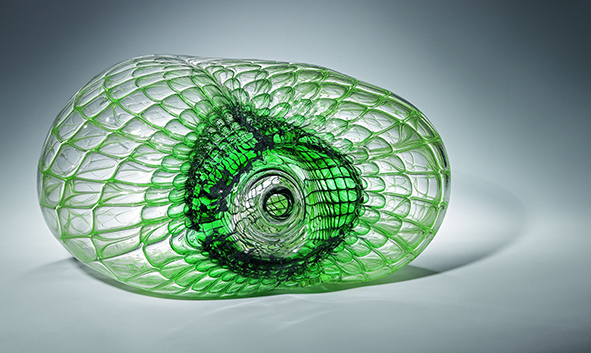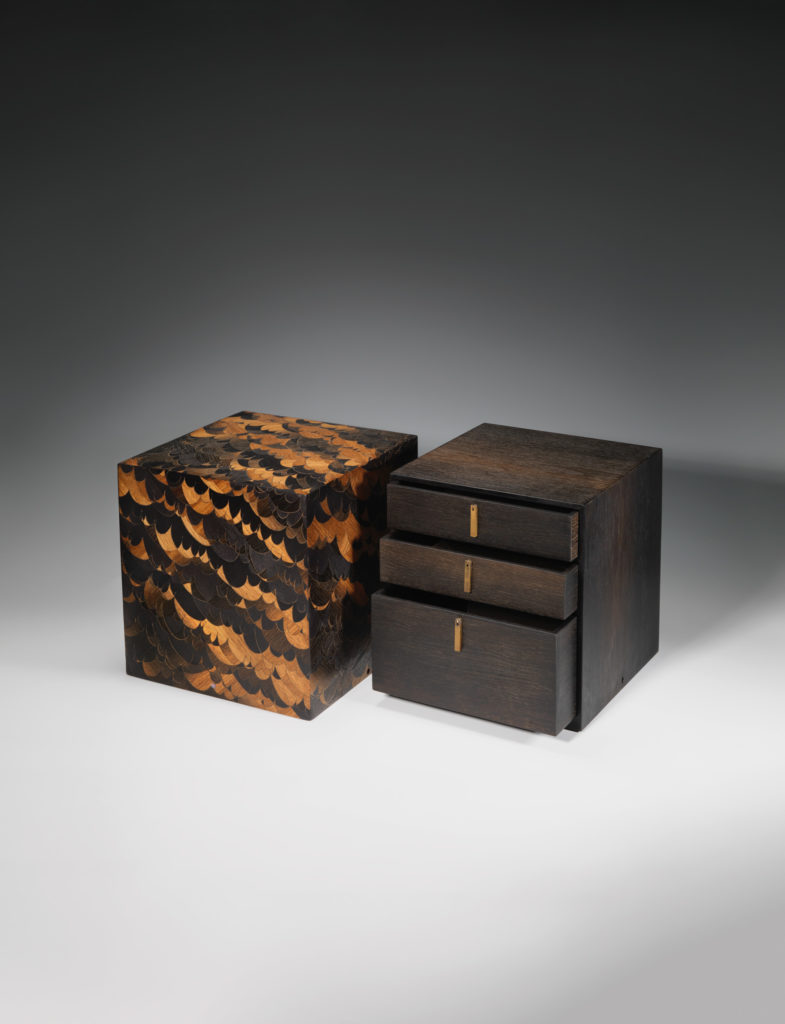Applied Art
From the Han dynasty to Art Nouveau and the contemporary position
In the mpk’s arts and crafts collection, incunabula of cultural history from the Han dynasty (206 BC – 220 AD) in China to outstanding European medieval carving and goldsmith art, Art Nouveau glass and contemporary arts and crafts artifacts are on display. The combination of different cultures and eras with the fine arts results in an exciting and varied presentation of the collection. This results in interesting dialogs, which are further deepened in specific special exhibitions.
As if the horse’s head from the Chinese Han dynasty was inspired by the ideas of modern abstraction, the piece, which is over 1800 years old, shows the essence of a horse. The powerful and elegant animals functioned as status symbols of the nobility and military among the grave goods.
The meticulousness and artistic sophistication with which the assistant figure of a high altar was crafted is unbelievable: The “Mourning Angel” by Nicolas Gerhart van Leyden, originally placed at a height of 4 m to the right of the crucifix of the high altar of St. George in Nördlingen, was rather marginal there. And yet it is finely crafted – an impressive example of deep piety. Physically scarred by a great shock, an angel is shown being instantly seized by the knowledge of the death of Jesus Christ and making the spiritual pain physically visible. His finely feathered body writhes and, in combination with the sad face, makes individual grief visible – carving art of the highest level.
The funnel goblet from the glassworks of Wolfgang Vitl in Hall (Tyrol) is one of the rare thin-walled and colorless glasses from the 16th century. This glass also comes from an ecclesiastical context, but as a coveted luxury item it expresses far more worldly ownership. The coat of arms indicates that it belonged to the estate of Mathäus Lang (1468 – 1540), who was Cardinal and Archbishop of Salzburg from 1519 and was known for his penchant for pomp and splendor.
There are only 20 pieces by the master goldsmith Hans Kellner from Nuremberg in the world. One of these handcrafted rarities can be seen at the mpk. The newlyweds had to drink from the bridal cup without losing a drop. It was not easy to coax the good wine out of the two vessels, the wide skirt and the rotating cup, without losing a drop. If they did not succeed, small but nasty tasks awaited their solution.
Today, the mpk has a collection of around 3000 objects, a selection of which is on display. These include furniture from different centuries, medieval glass and top-class silversmithing. All the pieces take visitors on a delightful journey into the craftsmanship of the past, which is always worthwhile. Their current relevance is provided by a small series of exhibitions in which contemporary artists are invited to work with the collection. New works of fine art are created specifically in response to our objects of applied art. An exciting dialog that encourages us to rethink and sharpen our understanding of culture and, almost incidentally, opens up a new perspective on both areas of artistic creation.
